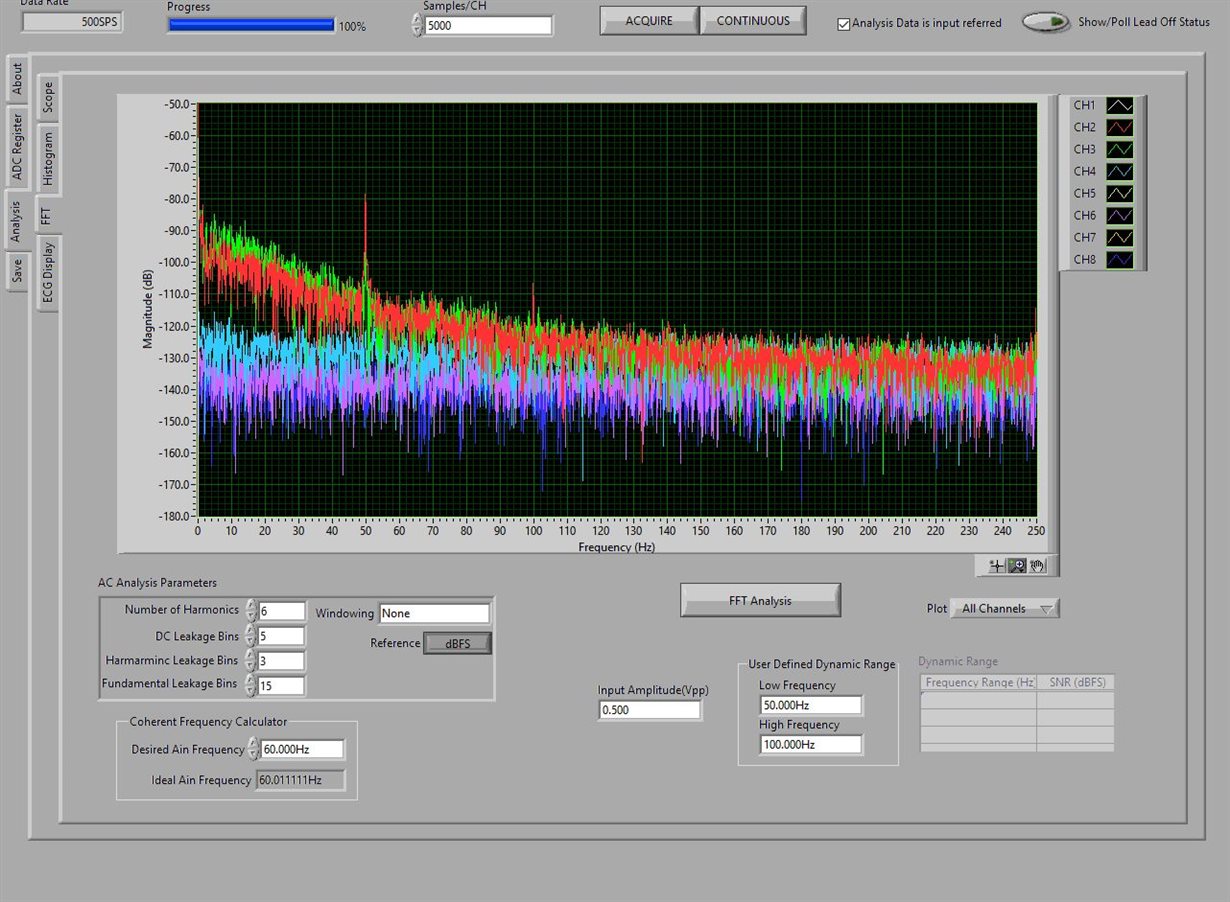Hi,
I recently purchased the ADS1198ECG-FE EVM for prototyping.
Although the board has RLD, ELEC SHIELD, I couldn't find clear instructions on how to eliminate the noise from 50Hz mains. This is greatly affecting the prototyping process.
In our current setup, we are using 5 electrodes where one of them connected to the AGND of the board as a gnd and the rest are used as channel inputs.
I appreciate your assistance on this,
Thanks


